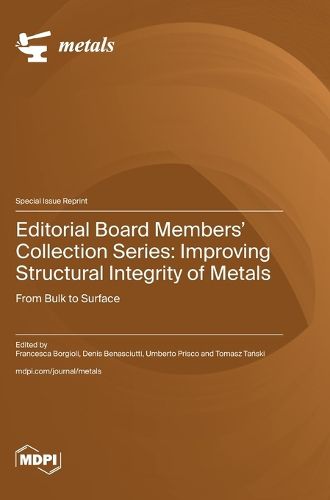Readings Newsletter
Become a Readings Member to make your shopping experience even easier.
Sign in or sign up for free!
You’re not far away from qualifying for FREE standard shipping within Australia
You’ve qualified for FREE standard shipping within Australia
The cart is loading…






This title is printed to order. This book may have been self-published. If so, we cannot guarantee the quality of the content. In the main most books will have gone through the editing process however some may not. We therefore suggest that you be aware of this before ordering this book. If in doubt check either the author or publisher’s details as we are unable to accept any returns unless they are faulty. Please contact us if you have any questions.
Metals and alloys continue to play a paramount role in the design and construction of load-bearing structures and mechanical components. Ferrous and nonferrous alloys find countless applications in various industrial areas, including automotive, aerospace, marine, construction, and manufacturing fields. When it comes to guaranteeing the structural integrity and safety of critical parts, a variety of protection and strengthening mechanisms may be used both at the bulk level and the surface level. Manufacturing processes and heat treatments can be used to tailor the microstructure to possess the desired combination of mechanical properties, while surface engineering processes can modify the outermost part of a component for prolonging further its service life. Aside from material properties, analysis methods are also relevant tools for evaluating the structural integrity and assessing the probability of failure of structures in service.
This Special Issue gathered articles that present up-to-date methods and approaches for analyzing, preserving, and improving the structural integrity of metallic components. Attention is also paid to the phenomena occurring at the bulk and surface level while also considering the role of the manufacturing process as it correlates to the material microstructure, as well as advanced methods for reliability analysis. The outcomes of experimental, numerical, and theoretical approaches are also considered.
$9.00 standard shipping within Australia
FREE standard shipping within Australia for orders over $100.00
Express & International shipping calculated at checkout
This title is printed to order. This book may have been self-published. If so, we cannot guarantee the quality of the content. In the main most books will have gone through the editing process however some may not. We therefore suggest that you be aware of this before ordering this book. If in doubt check either the author or publisher’s details as we are unable to accept any returns unless they are faulty. Please contact us if you have any questions.
Metals and alloys continue to play a paramount role in the design and construction of load-bearing structures and mechanical components. Ferrous and nonferrous alloys find countless applications in various industrial areas, including automotive, aerospace, marine, construction, and manufacturing fields. When it comes to guaranteeing the structural integrity and safety of critical parts, a variety of protection and strengthening mechanisms may be used both at the bulk level and the surface level. Manufacturing processes and heat treatments can be used to tailor the microstructure to possess the desired combination of mechanical properties, while surface engineering processes can modify the outermost part of a component for prolonging further its service life. Aside from material properties, analysis methods are also relevant tools for evaluating the structural integrity and assessing the probability of failure of structures in service.
This Special Issue gathered articles that present up-to-date methods and approaches for analyzing, preserving, and improving the structural integrity of metallic components. Attention is also paid to the phenomena occurring at the bulk and surface level while also considering the role of the manufacturing process as it correlates to the material microstructure, as well as advanced methods for reliability analysis. The outcomes of experimental, numerical, and theoretical approaches are also considered.